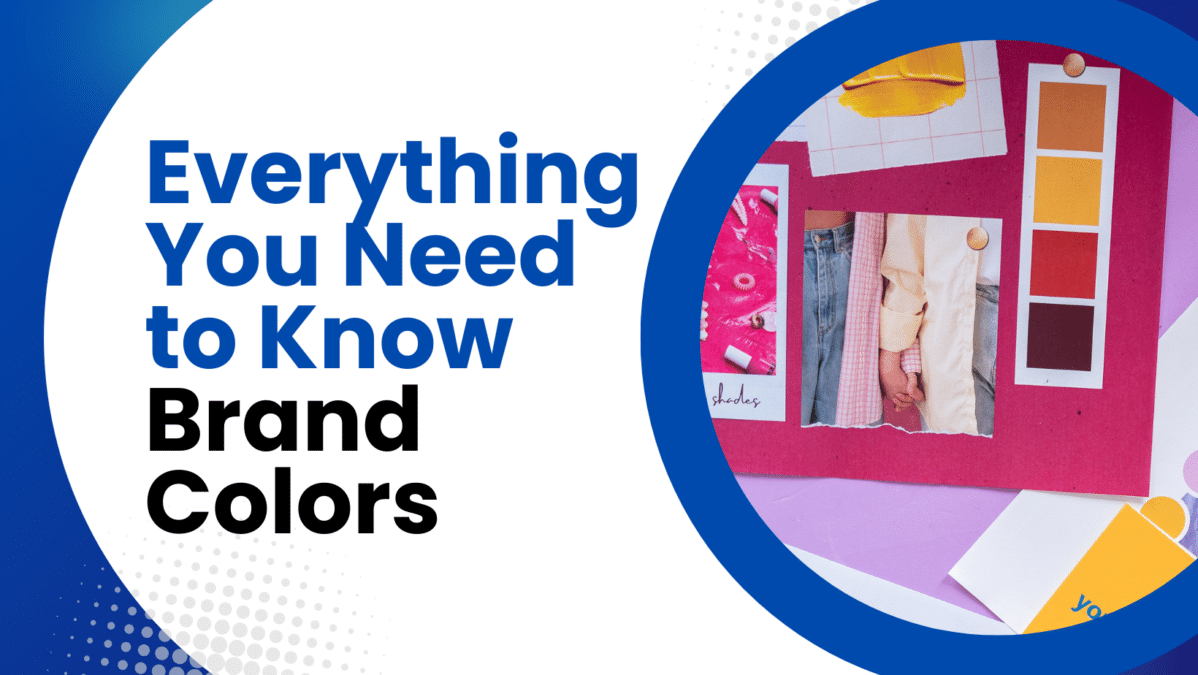
Disruptive Marketing: A Comprehensive Focus on Innovative Breakthroughs
August 1, 2023
Cost Per Acquisition: Get Innovative Strategies for Competitive Success
August 15, 2023Everything You Need to Know Brand Colors
Explore the power of brand colors in marketing. Learn about color psychology, how to choose effective colors, and avoid common mistakes.
Colors speak louder than words! They play an integral part in your brand’s identity, weaving an emotional and psychological tapestry. Let’s unravel the mystery behind brand colors, their impact, and how to use them effectively when you are creating a brand identity.
The ABCs of Brand Colors
Brand colors refer to the colors you select to represent your brand. They’re more than just an aesthetic choice. Your brand colors play a crucial role in creating a strong brand identity. They help distinguish your brand, stir emotions, and even influence purchasing decisions. Recognizing this can elevate your branding and marketing strategy to new heights.
Unlocking Color Psychology
Color psychology is the study of how hues influence human behavior and elicit emotional responses. It suggests that colors can evoke certain feelings or perceptions, playing a pivotal role in shaping our decisions, especially when it comes to consumer behavior.
Each color, from the calming blues to the energetic reds, conveys a unique message and induces a specific emotional response. For instance, blue often symbolizes trust and reliability, and it can foster a sense of calm and security. This is why you frequently see it in corporate branding and healthcare settings. On the other hand, red tends to symbolize excitement and passion. It’s a color that naturally draws attention, which is why it’s often used in sales and clearance events.
However, interpretations of color can also be subjective and influenced by personal experiences, cultural backgrounds, and context. Thus, understanding color psychology isn’t about strictly defined rules but rather about recognizing these potential associations and leveraging them effectively in your brand strategy. Let’s briefly review the top ten brand colors:
- Red exudes energy, passion, and urgency.
- Blue suggests trust, reliability, and calmness.
- Yellow radiates happiness, positivity, and caution.
- Green reflects growth, health, and eco-friendliness.
- Black embodies power, sophistication, and elegance.
- White portrays purity, simplicity, and cleanliness.
- Purple denotes creativity, wealth, and mystery.
- Orange stimulates enthusiasm, excitement, and warmth.
- Silver conveys sophistication, modernity, and high-tech.
- Gold implies luxury, quality, and success.
Take Coca-Cola, for instance. Their bold red encourages excitement and appetite. Meanwhile, Tiffany & Co.’s iconic robin’s-egg blue promotes feelings of sophistication and luxury.
Choosing the Right Brand Colors
Choosing your brand colors is a thoughtful dance, balancing your brand’s message, industry norms, and your audience’s expectations. It’s about knowing who you’re speaking to — a youthful demographic might gravitate towards vibrant, bold colors, while an older audience could favor refined, subtle hues.
Every industry has its color trends. For example, children’s brands might favor bright, playful colors, while law firms often opt for subdued blues or grays, signaling trust and professionalism.
Once your main brand color is chosen, it’s time to select complementary hues. This isn’t a random choice. Complementary colors, positioned opposite on the color wheel, can create dynamic contrast, making your brand visually appealing. Alternatively, analogous colors, those neighboring each other on the wheel, can create a more harmonious and cohesive look.
Tools like Adobe Color CC can guide you in creating the perfect color scheme.
By considering all these factors, your brand can tell a compelling color story, resonating deeply with your audience and standing out in the competitive market landscape.
Consistency is Key
Consistency is the bedrock of a strong brand. By maintaining color consistency across all mediums, you can significantly enhance your brand recognition. Think about McDonald’s, a brand that has become globally synonymous with the fast-food industry. Their unwavering use of bold red and warm yellow across all platforms — from their restaurant design to their website and print ads — has firmly established their brand identity in the minds of consumers worldwide.
Consistency doesn’t mean you’re limited to one or two colors, though. You can have a palette of various colors, but the key lies in using them consistently in the same role. This means your primary color is always serving as your main color, your secondary colors support the main color, and so forth. This attention to detail provides a coherent and recognizable color scheme that your audience can associate with your brand.
Achieving this level of consistency might seem challenging, but the creation of a brand style guide can simplify the task. This critical document should outline your brand colors, detailing the exact color hex codes, and when and how to use them. This guide ensures anyone working on your brand — whether they’re creating a new webpage, designing a flyer, or updating your social media profiles — can reproduce your brand colors accurately.
In this era of digital transformation, where your brand is likely to appear on various devices and platforms, color consistency is crucial. Remember, screen settings can impact how a color appears, so it’s important to double-check that your colors are displaying correctly across different screens.
Maintaining color consistency helps shape a strong, identifiable, and reliable brand. The end goal is for customers to see your brand colors and instantly connect them to the unique experience and values that your brand offers. So, make consistency a priority, and watch your brand identity flourish.
To ensure consistency, create a brand style guide. This reference tool should detail your exact color hex codes for consistent reproduction in print, online, and on social media.
Brand Colors’ Evolution
Over time, you may need to update your brand colors. This could be due to a shifting target audience, a rebrand, or a desire to keep your brand fresh. Instagram’s transition from a detailed camera icon to a simple gradient is a prime example. Remember, when undertaking such changes, aim for a smooth transition to avoid customer confusion.
Pitfalls in Picking Brand Colors
The process of choosing brand colors might appear easy, but it’s a strategic endeavor where missteps can happen. It’s crucial to be aware of these pitfalls to navigate your way to a color scheme that truly encapsulates your brand.
One common mistake is selecting colors solely based on personal color preference, like your favorite color. While you should certainly like your brand colors, it’s more critical that they effectively communicate your brand’s personality and appeal to your target audience. A color you adore might not resonate with your audience or align with your brand’s message. This could lead to misinterpretation of your brand or, worse, disconnect with your target audience. Also, be sure to base your choices on strategic considerations rather than fleeting trends.
It’s vital not to underestimate the significance of color contrast, particularly when it comes to the readability of digital content. Pairing colors with insufficient contrast can result in text that’s hard to read and design elements that blend together. This can frustrate users and even deter potential customers. Tools like the WebAIM Contrast Checker can help ensure your color choices provide enough contrast for optimal readability.
Also, bear in mind the cultural connotations of certain colors. The color meanings can vary dramatically from culture to culture. What may be seen as a symbol of prosperity in one culture could symbolize something negative in another. If your brand caters to a global audience, it’s wise to consider these cultural implications to avoid unintentional offense or misunderstandings.
Research, thoughtful decision-making, and careful testing can help you avoid these pitfalls and lead you to a brand color palette that both aligns with your brand and resonates with your audience.
You want to choose the right colors because your brand’s image depends on it.
The Final Palette
Our journey through the realm of brand colors has hopefully shed some light on their importance. As we have learned, choosing brand colors is not about personal preference but rather a strategic business decision. Take a thoughtful look at your brand colors today and ask yourself – do they align with your brand’s message, target audience, and industry?
Empowering Your Brand Identity
Advent Trinity Marketing Agency is your ideal partner when it comes to forging a powerful brand identity. Our team of seasoned professionals understands the intricate dynamics of brand colors and their influence on customer perception.
With our expert guidance, we’ll help you navigate through the maze of color psychology, ensuring that your chosen colors align perfectly with your brand’s mission and resonate with your target audience. Whether you’re building a new brand or refreshing an existing one, we focus on creating a unique, memorable, and consistent color palette that stands out in today’s crowded marketplace. With ATMA, you can trust us to bring your brand to life in full, vibrant color. Your palette awaits.




